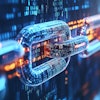
BluJay Solutions released findings from its third annual research study, “Creating Resilience Amid Disruption: Research on How Supply Chains are Changing for Success and Survival.”
Commissioned by BluJay and conducted by Adelante SCM, in partnership with the Council of Supply Chain Management Professionals (CSCMP), the research gleans insights into how supply chain organizations have navigated the exceptional global disruption from COVID-19 and how companies plan to make their supply chains more resilient.
Among the top findings include, the pandemic is proving to be a catalyst for change, with 75% of survey respondents saying their companies will make changes to supply chain practices based on lessons learned from the pandemic.
“Disruption has always been a part of managing the supply chain, but the velocity and scale of disruption that organizations have had to contest within 2020 has been unprecedented. Supply chains of almost every company in the world have been impacted, with some halting operations and others struggling to meet unexpected surges in demand,” said Patrick Maley, Chief Marketing Officer at BluJay Solutions. “The pandemic has made it very clear how imperative supply chain resilience is to success and survival. We hope the results of this research will provide useful insights and spark important conversations between all stakeholders to create smarter, better, and more resilient supply chains moving forward.”
Supply chain professionals from industries including manufacturing, retail and logistics service providers (LSPs) were surveyed, with 233 qualified respondents answering a series of questions about innovation, customer experience, and technology. Participants self-identified their company’s performance relative to industry peers, along with culture relative to technology adoption (Above Average Performers v. Average or Below Average Performers, and Innovators/Early Adopters v. Laggards/Late Majority, respectively). New this year was also a selection for respondents’ generation, to view the data through the lens of generational perspective.
Key findings from the survey are summarized as follows:
Forging a more resilient supply chain
While on one hand, the COVID-19 pandemic has been a great disruptor of supply chains, it is also serving as a catalyst for change and innovation.
Overall, 75% of the respondents expect to make moderate-to-extreme changes. More than a third of survey respondents (34%) expect their companies will make Many or Extreme changes in how they design and operate their supply chains to become more resilient.
When asked which functions or processes within their supply chain will require the most changes or re-evaluation, respondents rank IT capabilities (61%) and human resources policies (58%) as the Top 2. For many companies, the quick and unexpected shift to working from home uncovered shortcomings in their HR policies and IT capabilities, especially for companies dependent on on-premise applications that are not accessible via the cloud.
A majority of survey respondents agree that creating a more resilient supply chain begins with developing stronger, more transparent relationships with key suppliers. This was the top-ranked action (53%) that respondents expect to take to create a more resilient supply chain, followed by cross-train employees (49%) and expand/diversify supplier base (43%).
Visibility into demand and supply will be even more critical moving forward; the Top 4 responses point to a key lesson learned from the pandemic: the importance of having real-time visibility to demand and supply in order to respond quickly and efficiently to changing conditions, and the ability to model and simulate different scenarios ahead of time in order to proactively prepare for whatever lies ahead.
Customer experience survives the pandemic
While providing an enhanced customer experience has been particularly difficult during the pandemic due to stockouts and delayed deliveries, companies retain their belief that customer experience will become the number-one brand differentiator over the next five years.
Sixty-two percent of the survey respondents Agree or Strongly Agree with this – a slight increase from 2019 when 61% responded the same.
As in 2019, there was a notable difference between North American companies and those in the rest of the world (ROW). Once again, a lower percentage of North American companies Agree or Strongly Agree that customer experience will become the number-one brand differentiator compared to ROW companies (59 vs. 67%). The gap between them, however, decreased by 38% compared to 2019.
Emerging drivers and barriers to innovation
Considering the large economic and financial impact of the pandemic, it’s not surprising that reducing costs is the top factor driving supply chain innovation. This year To reduce costs/become more cost competitive ranked first overall with 31% of top factor votes.
On the flip slide, the Top 2 barriers to innovation were Siloed systems and/or processes (17%), followed by Existing IT systems are outdated (14%), which remained consistent with the previous year’s results.
This year’s research also saw geopolitical factors and trade uncertainty emerge as barriers to innovation. For Innovator/Early Majority companies, Geopolitical and/or trade uncertainty received the most top-barrier votes (16%) while in contrast, this choice received only 7% of top-barrier votes from Laggard/Late Majority companies. These results suggest that global trade issues, like the tariff war between the United States, China, and other countries, as well as Brexit, are hindering innovation at some companies due to ongoing risks and uncertainties.
The multi-generational supply chain
For this year’s survey, respondents were asked to identify which generation they belong to: Silent Generation (born 1925-1945), Baby Boomer (born 1946-1964), Generation X (born 1965-1980), Millennial (born 1981 - 1996), and Gen Z (1997 - present). Looking at the results from the different generational perspectives provided a view into where supply chain management is headed.
Overall, the two groups in mid-and early-career stages put a stronger emphasis on the value of technology, transparency, and environmental responsibility. Millennials and Generation Z respondents most recognize the importance of Business Intelligence/Analytics/Machine Learning in delivering an enhanced customer experience. While this capability only received 7% of most beneficial votes from Silent/Boomer respondents, it received 24% from Millennial/Gen Z respondents.
When it came to the top innovation drivers, To create a competitive advantage received a larger percentage of top factor votes from Gen X respondents, while To meet sustainability goals received significantly more top-factor votes from Millennial/Gen Z respondents compared with Silent/Boomer and Gen X respondents. Additionally, Silent/Boomer respondents view external trading partners as being a much bigger barrier to innovation than internal functional groups, while Gen X and Millennials/Gen Z respondents believe the opposite.

















